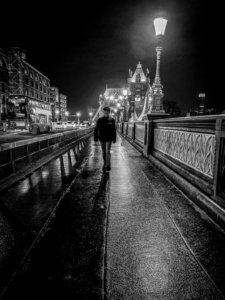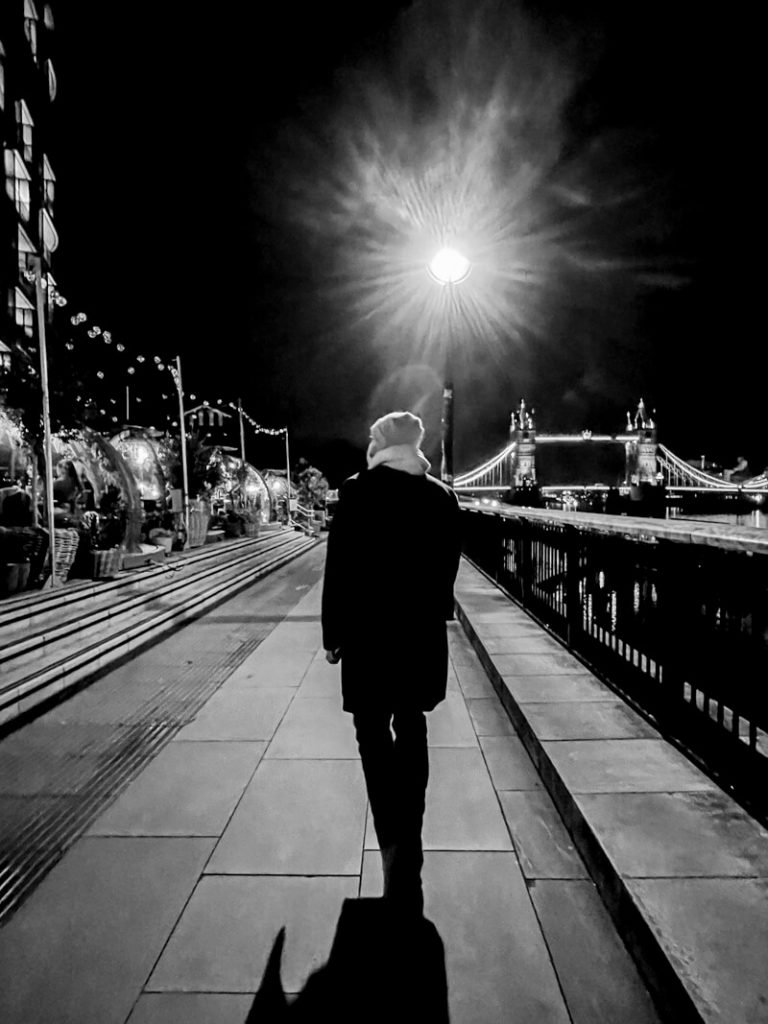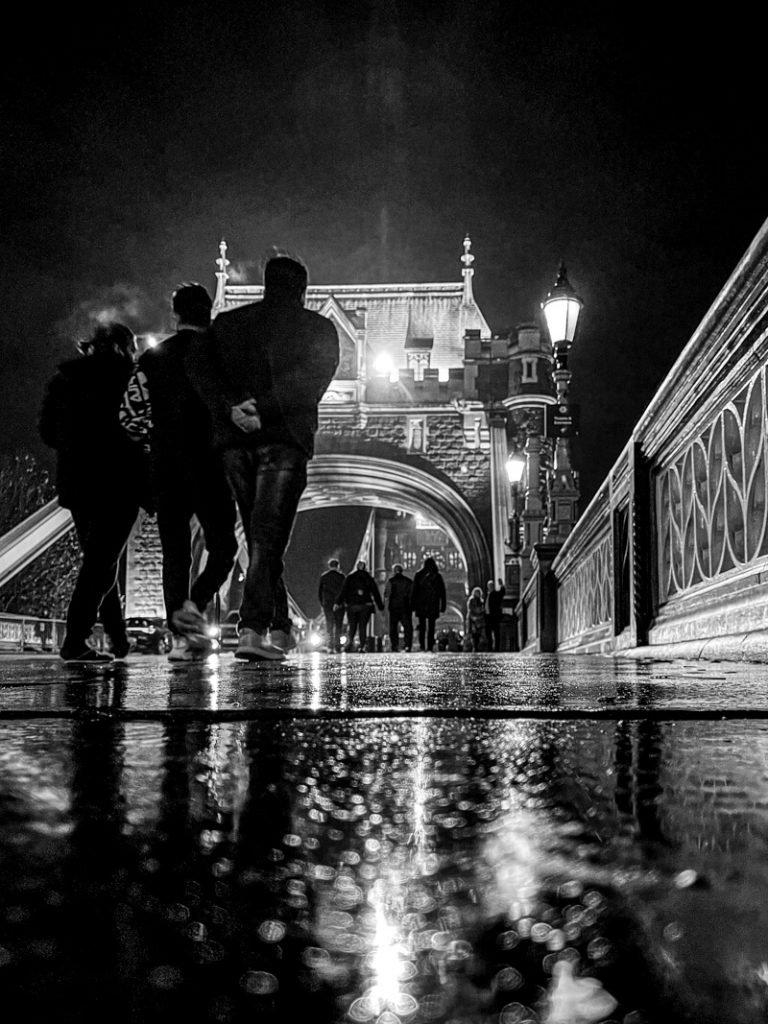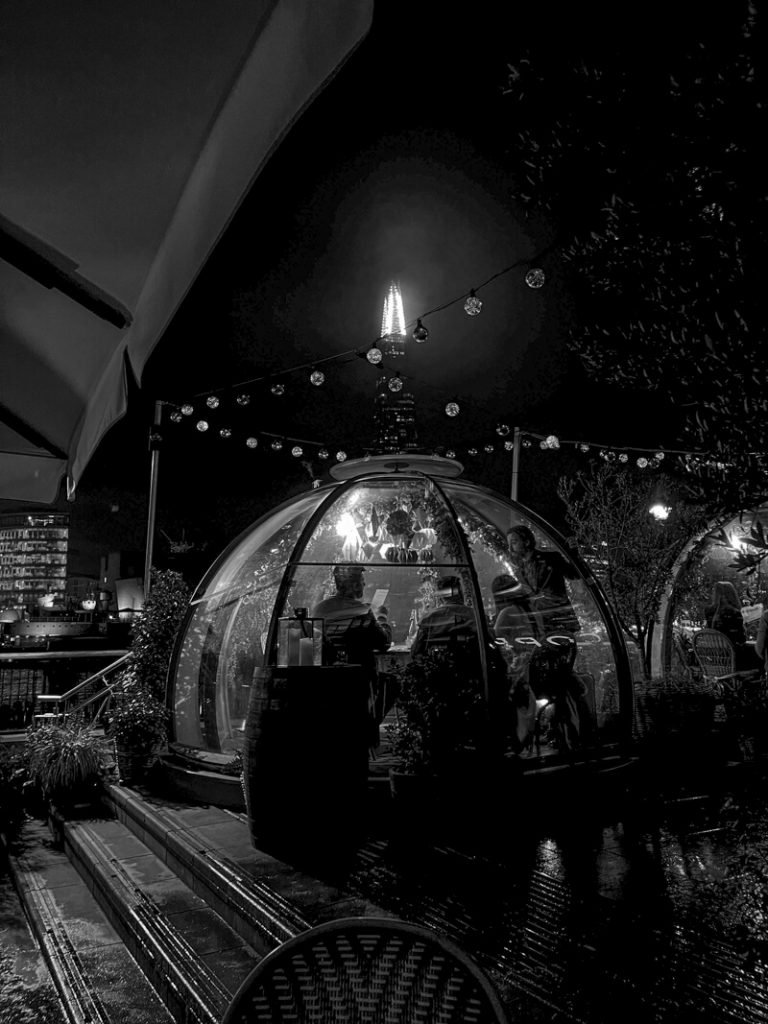James Nader Photo Diaries – Black and White Street Photography London – Nightime
All pics taken on iPhone 14 Pro Max, edited on Lightroom Mobile. Here are some of my own tips for street photography based on my early misadventures.
Getting Started
It’s the beginning that’s hard, and also the fear of shooting strangers. A good street photographer is not just afraid to begin with, but he doesn’t want to do anything that will change the behaviour of the subjectPick the perfect moment, and the perfect composition.
I was almost going to lead you into this. So you need a perfect spot — somewhere that people can either move into or out of. A great place is an alley. Or a tunnel. Or an ingress — somewhere where you can pre-compose your shot. Most of the time, I’m not going to be grabbing shots with 50mm or even 80mm — not that I think I’ve actually done that so far anyway. It’s not about getting up close — that’s what I do on my branded shoots, which are posted at [www.jamesnader.com](http://www.jamesnader.com) — to me, this is a different thing entirely. I would think that, next month — This month we have a super interview with David Gleave who does it all the time.

Do Not Remove Your Eye from the Camera After Your Shot
You probably won’t be lucky or skillful enough to find anyone to shoot, but this is a good way to begin. It shouldn’t be scary, and you’ll discover that even when standing right next to your subjects, you can take their photos and they won’t really notice. You can try the same trick at street fairs or parades. Most tourist areas are jam-packed; besides the obvious choice of a famous landmark, just about any crowded place filled with gawking visitors will do.
Using the LCD Back of the Camera or Phone to Compose Helps Being Covert
Keep your non-shooting eye open – and when you see possible subjects, try and find a reason to look at them, even though the camera is in your eye. All DSLRs have back-view LCD screens, which on balance was best for me because you can not only track, compose, and shoot, but the subject does not become nervous around you, as they wonder what your motives are since they know you are either pointing at them or fixing your gaze upon them. They can’t see that you have your camera in your eye.

Shooting Techniques
Shooting from the Hip vs. Having the Camera in Your Eye
If I can get it with the camera to my eye, I will get a better shot. To be real clear, that is my method, the shooting-from-the-hip-method. There may be times when it is simply not possible to shoot with the camera to your eye. And if you’ve learned the skill of shooting from the hip, you will be able to solidify this technique. Decide what you want, decide the depth-of-field you want, decide the exposure you want, decide the ISO. All of this will help you set up the shot and create anticipation before you push the release or if you have a mirrorless camera you can fire away. Then you can totally focus on angles and composition. I can see what the scene may possibly be, and I can set all my dials to the proper calibration while I’m walking, running, or laying here on the beach.

Pre-Focus
You’re anticipating that you will snap a certain subject and pressing down on the shutter to acquire focus on them, but maybe you’re not yet ready to fire the shutter, maybe they aren’t moving very much – well, you can keep holding that back button now until you are ready to shoot, or you can turn a lens to manual focus while you are pressing, then release the button and know that the same principle still applies. Don’t forget to switch the lens back to autofocus when you’re done, otherwise all your subsequent shots will be out of focus.

Modern cameras have a grid of focus points – not very helpful for street shooting – and I’d advise turning them all off in favour of the centre focus point, which you’ll be using to pre-focus. I don’t actually like it when the camera decides where to focus, and I wouldn’t shoot with it finding the focus point on my centred Nikon or Fuji) But on the iPhone on which this sequence of pictures was shot, I am more deliberately holstering out front for more impact to the picture; more of the location can fill the frame. But I set my focus the old-fashioned way, by tapping before the subject, by approaching the shot prepared or tracking them, and tapping a few times in a row if need be to make sure they continue to get where I intend them to end up. They will be where I intend them to be and they will be focused.
There are no comments